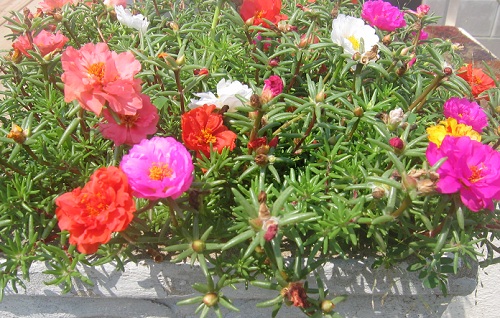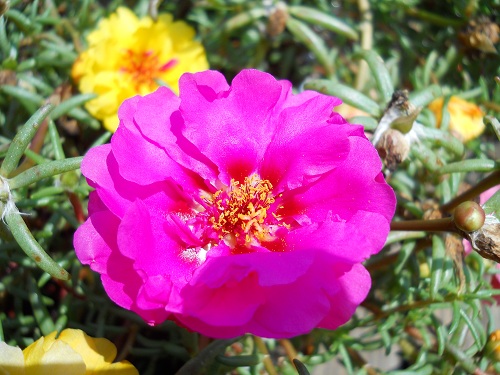The portulaca is blooming again–and boy, is it a stunner.

I have used portulaca all the traditional ways—concrete pots, flower beds, and as an under-planting for larger flowering plants like zinnias. Once I stuck a handful of plants into the hollowed-out portion of an old stump. That ended up looking particularly nice.
I recall as a youngster getting a broken piece of “rose moss” and sticking it into a plastic ice cream bucket. I piled some dirt around it and hung it from the clothes line. After a few days of watering it began to bloom and soon filled the bucket. It never ceased to amaze me that it lived and thrived and it didn’t even have roots when I stuck it in the pot. That’s how easy portulaca is to grow. It’s practically indestructible.

Rose moss is very drought tolerant, requires no special fertilizer, and is rarely affected by insects. The seed is tiny, so you might want to mix it with sand before sowing it. Or just do as I do and borrow a clump of live plants from a friend or neighbor. Stick them in the dirt and stand back.
Each rose moss bloom, which won’t open on a cloudy day, lasts just one day, but is replaced each day by more and more blooms until they form a veritable carpet of rainbow colors. Once you’ve grown a pot full of these daily bloomers you are set for life. They produce thousands of tiny seeds in their pods, and end up self-sowing themselves. They’ll come back up in the same pot every year. The plants are tiny and reddish-colored when they first emerge after the frosts are over.
Get a pot started. You’ll be greeted each sunny morning with a fresh burst of color.
© Wade Kingston
